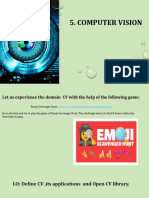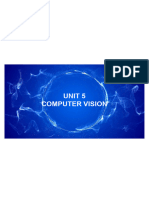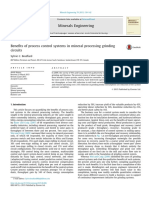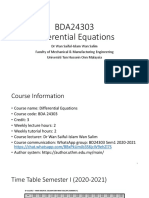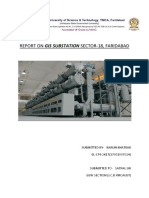0% found this document useful (0 votes)
22 views14 pagesCV - Unit 1
Chapter 1 introduces computer vision as a branch of artificial intelligence that enables machines to interpret visual data through various applications such as face detection, self-driving cars, and augmented reality. It covers the basics of image representation, formation, and the importance of camera calibration for accurate image processing. The chapter also details the intrinsic and extrinsic parameters necessary for mapping 3D world coordinates to 2D image coordinates, along with methods for correcting image distortions.
Uploaded by
abc.asdfghjkl.2345Copyright
© © All Rights Reserved
We take content rights seriously. If you suspect this is your content, claim it here.
Available Formats
Download as PDF, TXT or read online on Scribd
0% found this document useful (0 votes)
22 views14 pagesCV - Unit 1
Chapter 1 introduces computer vision as a branch of artificial intelligence that enables machines to interpret visual data through various applications such as face detection, self-driving cars, and augmented reality. It covers the basics of image representation, formation, and the importance of camera calibration for accurate image processing. The chapter also details the intrinsic and extrinsic parameters necessary for mapping 3D world coordinates to 2D image coordinates, along with methods for correcting image distortions.
Uploaded by
abc.asdfghjkl.2345Copyright
© © All Rights Reserved
We take content rights seriously. If you suspect this is your content, claim it here.
Available Formats
Download as PDF, TXT or read online on Scribd
/ 14





